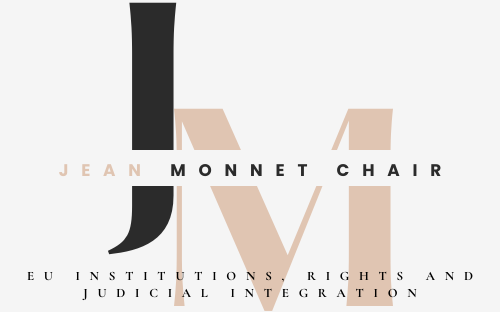Institutional Law of the European Union
The course aims to understand the institutional structure of the European Union and the basic principles that govern it. In particular, the idea of the creation of the European Union and the course of European integration to date are examined; the composition, function and responsibilities of the institutions of the European Union; the types, characteristics and legal consequences of European legislation;
Upon completion of the course, students will be able to assess the sui generis character of the European Union, recognize the fundamental economic principles that govern the European Union, critically approach the institutional structure of the European Union and accurately define the role and functions of basic EU institutions. They will also be able to analyze the modalities that the European Union derives from law and describe its characteristic features. Finally, they will be able to practically use the text of the Treaty for the Functioning of the European Union.
Judicial Protection in the EU
During the course, the structure and composition of the Court of Justice of the European Union are first analyzed. The jurisdiction of the Court, the General Court and the Civil Service Tribunal are also studied. Judicial and extrajudicial mechanisms for the protection of Union rights are then examined. In particular, issues related to the action for annulment, the objection of illegality, the action for failure to act, the reference for a preliminary ruling, the action for damages and the European Ombudsman are analyzed. The study then focuses on judicial and extrajudicial mechanisms for the protection of EU rights when they are affected by national authorities. In particular, issues relating to the European Commission's action against a Member State, referral, compensation action, the national ombudsman and the SOLVIT service. The course concludes with an analysis of the forms of interim judicial protection at EU level. All of the above are crucial for understanding the overall network of judicial and extrajudicial protection at national and EU level.
EU Human rights protection
The course explores the historical development of the protection of human rights in EU law, its differentiation and its association with that provided by the Council of Europe and in particular by its main body, the European Court of Human Rights (ECHR). The following is a study of the institution of citizenship and the principle of non-discrimination, certain categories of rights (political, social), specific sub-rights (traffic, personal data protection, ne bis in idem principle) and rights of specific bodies (asylum seekers). The focus is then on the European Union's (EU) accession to the European Convention on Human Rights (ECHR) and its implications for the level of human rights protection provided by the EU. Emphasis is also placed on the structure of EU-UN relations in the light of human rights. The course concludes with a study of the rules of Union law governing the Union's relations with the Member States on the one hand when they threaten to infringe or seriously infringe on human rights and on the other with third countries (candidate or not).






